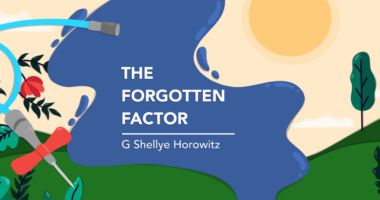A woman with factor VII deficiency shares her advocacy journey
How Connie Montgomery supports other women with bleeding disorders

I first met Connie Montgomery at the Hope Conference in Orlando, Florida, one of those rare moments when you instantly recognize a kindred spirit.
Over lunch, we fell into deep conversation about women with bleeding disorders, the challenges we face, and the determination it takes to keep pushing for better care. When we reconnected recently, Connie greeted me with a warm smile — two days before surgery. Even then, her strength radiated.
Her procedure would include a dilation and curettage hysteroscopy, an endometrial biopsy, and a possible polypectomy to evaluate and treat post-menopausal bleeding. Thankfully, her care team planned anesthesia, overnight monitoring, and factor support.
“Last year, I tried it awake,” she laughed. “That was not smart.”
Connie’s symptoms began in childhood: spontaneous bruising, long and heavy periods beginning at age 10, nosebleeds that lasted 10-12 minutes, and occasional bleeding overnight from her mouth or ears. Growing up in the Gullah Geechee community, her mother discouraged talking about her symptoms outside the home, but still sought help when things became unmanageable. Too often, they were dismissed.
Connie wasn’t diagnosed until her mid-30s, after a car accident led to her being hospitalized. An emergency room physician noticed her abnormal labs, consulted a hematologist, and pushed for answers. “Thank God for that doctor,” she said. After a week and a half of testing, she learned she had factor VII deficiency. Her mother, who clearly lived with symptoms, was never diagnosed.
Connie now also lives with stage 4 kidney disease, which requires careful coordination with her bleeding disorder care. She used to receive prophylactic treatment, but now manages factor use on demand due to her kidney concerns.
The making of an advocate
A message she hopes every clinician hears is that factor levels don’t always match the lived experience. “On paper, I looked mild,” she said. “But I was bleeding like a moderate or severe. Clinicians must listen to the words coming out of their patient’s mouth. I don’t need any more time wasted,” she told me. “I know what I deserve.”
At 54, she has learned to pace herself — scheduling rest, watching for microbleeds, and protecting her joints. “Planning my days is the biggest change,” she said.
Community has also been vital. During a pandemic call with other factor VII deficiency patients, they discovered they all had eye bleeds after flying — something no one realized until they talked. “Just in conversation, you learn so much,” Connie said.
Connie’s advocacy résumé is extensive. She has received multiple awards, delivered keynote speeches around the world, and serves on numerous boards and advisory groups. One of her most recent honors came at the National Bleeding Disorders Foundation’s conference in Colorado, where she received one of this year’s Mary M. Gooley Humanitarian of the Year awards.
She delivered the opening keynote address at the National Organization for Rare Disorders’ 2023 conference in Washington, D.C. She was also a presenter at the European Haemophilia Consortium Conference, an achievement she holds close to her heart. “It was eye-opening,” she said. “And meaningful to contribute my perspective.”
She encourages everyone with a bleeding disorder to advocate in three ways:
- Grassroots advocacy: Start in your own state.
- Washington Days: “At least once,” she said. “This is how policies are made that affect you and your legacy.”
- Global advocacy: “If you’re ever able to go and advocate on a global stage at any time, whether it’s virtually or whether it’s in person, do it,” Connie said.
Supporting women with bleeding disorders
She also mentors several young women in the bleeding disorders community, including Chelsee Nabritt, Paxton Mills, and Gabi Flores. She beamed as she talked about Mills, who is in medical school and plans to become a hematologist. “They are the future,” Connie said.
Through the Hope for Hemophilia women’s advisory council, Connie has helped build a referral list of hematologists who truly listen to and support women. I’m excited to partner with her to continue expanding this resource and to share it on my website, Girls Bleed Too.
When I asked her what advice she’d give women struggling to get diagnosed, Connie didn’t hesitate: “Do not give up. Keep going until you find a physician who will listen.”
She speaks openly about the emotional toll of medical gaslighting. Therapy has been essential. “Our mental health is everything,” she said.
As we wrapped up, Connie shared the motto she lives by: “I’m going to ride this life until the wheels fall off.” Her faith, resilience, mentorship, and fierce advocacy are shaping a legacy that will benefit generations of women with bleeding disorders. I’m grateful our paths crossed in Orlando — and grateful for the light she continues to shine.
Note: Hemophilia News Today is strictly a news and information website about the disease. It does not provide medical advice, diagnosis, or treatment. This content is not intended to be a substitute for professional medical advice, diagnosis, or treatment. Always seek the advice of your physician or another qualified health provider with any questions you may have regarding a medical condition. Never disregard professional medical advice or delay in seeking it because of something you have read on this website. The opinions expressed in this column are not those of Hemophilia News Today or its parent company, Bionews, and are intended to spark discussion about issues pertaining to hemophilia.







Leave a comment
Fill in the required fields to post. Your email address will not be published.